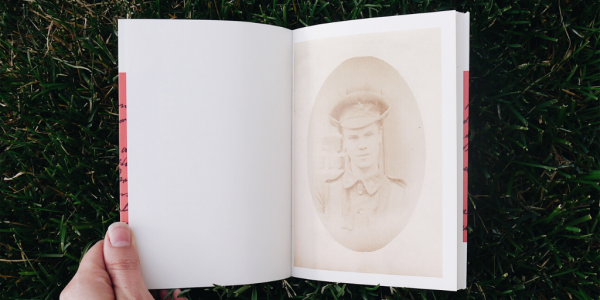The Wolves at My Shadow is the latest title in AU Press’s “Our Lives” series. In 1946, as a twenty-two year old, Ingelore Rothschild sits down to write of her family’s escape from Nazi Germany, through Russia, to Japan. The following excerpt is from early in the book when the Rothschilds are still living in Berlin. It is 1932 and there is mounting tension surrounding the actions of the Nazi Party.
Wolves at My Shadow is the latest title in AU Press’s “Our Lives” series. In 1946, as a twenty-two year old, Ingelore Rothschild sits down to write of her family’s escape from Nazi Germany, through Russia, to Japan. The following excerpt is from early in the book when the Rothschilds are still living in Berlin. It is 1932 and there is mounting tension surrounding the actions of the Nazi Party.
It was just after our geography lesson ended that I realized darkness had crept into my classroom and was all about us. Fraülein Müller, my teacher, went to the windows and pushed aside the curtains to allow what little light there was into the room. Earlier that morning there were ominous coal-black clouds on the horizon but they seemed so far away. Even though it was only mid-morning it appeared as if dusk had settled over us.
We were told to place our papers aside. We sat motionless, our fingers laced together on the tops of our desks. Fraülein Müller stood erect waiting for our collective and undivided attention. I remember she dressed plainly with blouse collars so stiffly starched they appeared as if they were made of cardboard. Her long straight hair was balled atop her head. She was tall with such big feet!
“Children,” she said, “we have visitors today so we’ll be going outside into the yard. There you are to form a straight line. When your name is called you’ll signal with your arm raised. Then you’ll be told either to sit down on the grass or go to a side table where you’ll answer whatever questions are asked of you.” She clapped her hands three times. “Stand, push in your chairs, follow me. Talking is forbidden.”
Once outside she motioned where we were to form our line. We did so quickly.
It seemed like night had fallen. The clouds were dense and dark. A storm was on its way. All the classes were in the yard, standing in perfectly straight lines. The children were stock-still and mute, our teachers rooted as sentinels nearby. Then our Schulleiter, the headmaster, came into the yard accompanied by two men in uniform. I wasn’t sure if they were soldiers or police but I guessed they were police.
Immediately I recognized the swastikas on their hats and armbands. One of the men was big and mean-looking, the bill of his cap pulled down to just above his eyes, his face in shadow, his eyes like beacons shining out from within. His lantern jaw was clean-shaven. I knew he was in charge, the leader. As the two of them walked past me I smelled the leather of their boots.[1]
When the soldiers stood at the centre of the yard our headmaster handed a sheaf of papers to the leader and then turned toward the school, leaving us in the yard. The other soldier went to a table situated near a gate that opened to an alleyway. He sat down, opened his briefcase, placed his papers before him, and then readied a pencil.
The bellowing voice of the soldier in the centre of our yard startled me. “I am Lieutenant Colonel Krüger. You will answer to your name as you have been instructed.” He gazed about our assemblage making sure everyone was attentive. Then he said, “We begin.” There was silence. Then, “Dieter Ackerman.”
The boy timidly raised his arm. The soldier checked the roster and then barked, “Sich hinsetzen!” Sit down! Like a vase falling from a shelf, Dieter collapsed on the grass. Another name was called. That child too was told to sit down. Then, another name, and so on.
Fear knotted my stomach. What name will the soldier call me by? Will it be Ingelore Rothschild or Erna Völker? To which name shall I answer? What am I to do?
“Levi Baumstein,” the soldier called. This boy was quivering when I saw him slowly raise his arm. Then pointing toward the gate, the officer said, “Proceed to Sergeant Keller.” The boy darted to the table as if a rabid dog were chasing him.
More names were called. Some children were told to sit while others were sent to the sergeant. I thought it was a random selection or perhaps a division based on neighbourhoods. As a wave of understanding washed over me my blood ran cold.
The children sent to the table were Jews.
[1] The authorities at Ingelore’s school that day most likely were an administrative detachment of the SS, the Nazi special police force, later known as the Blackshirts. They were likely registering the Jewish children and teachers on the school’s roster. They could also have been doing preparatory work for the coming expansion of the Hitler Youth program that soon would include girls between the ages of ten and fourteen (Mahlendorf, The Shame of Survival: Working Through a Nazi Childhood, 91).

